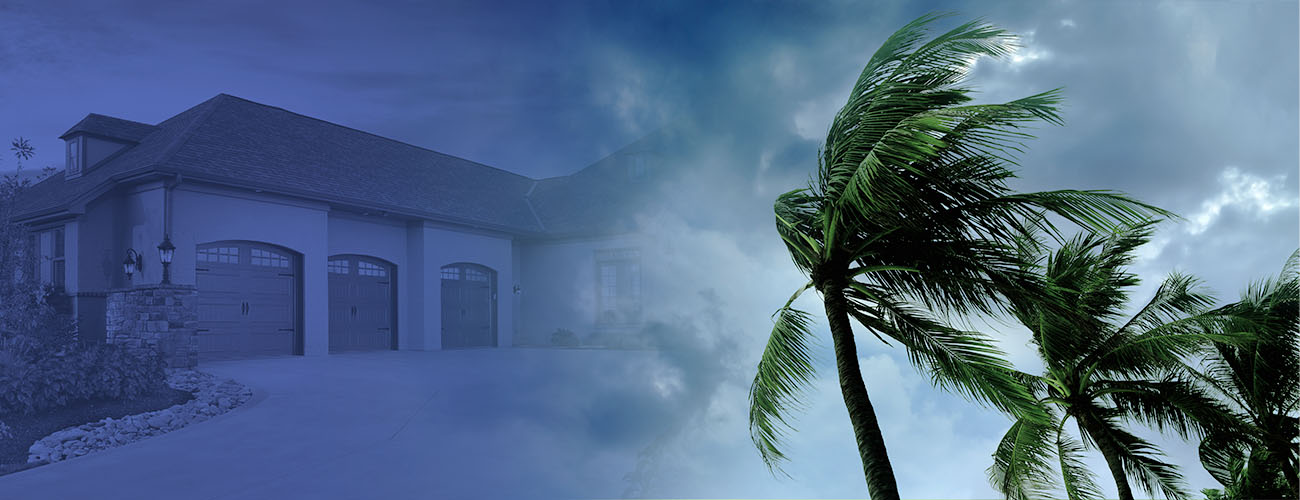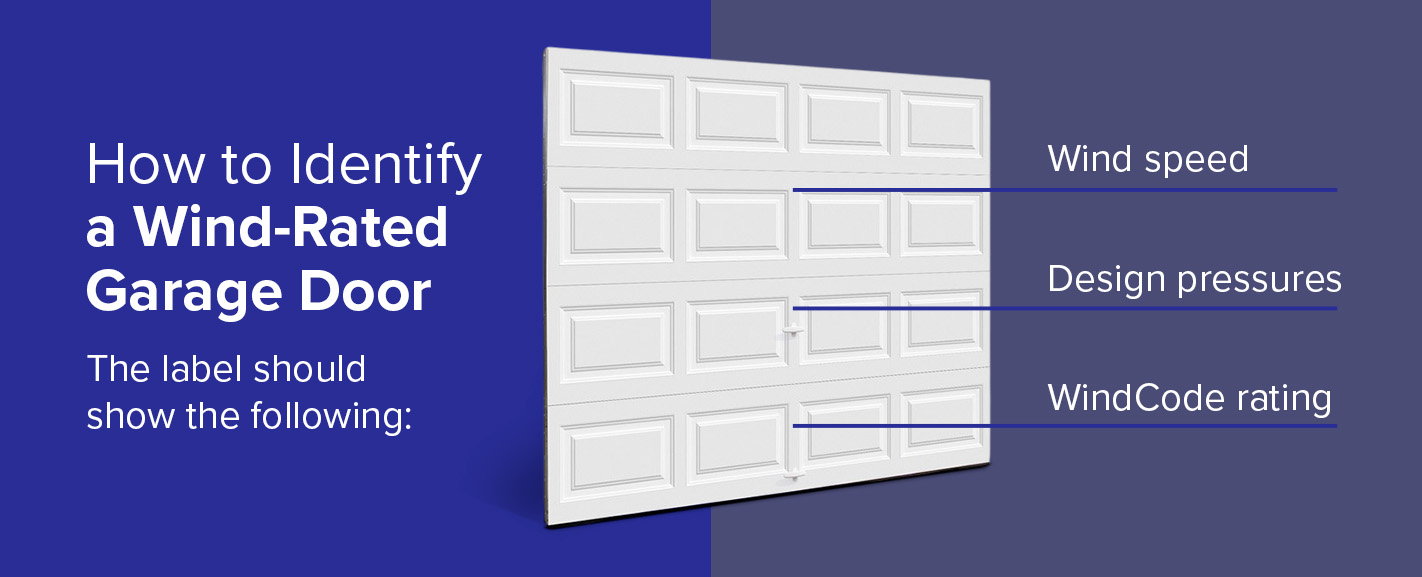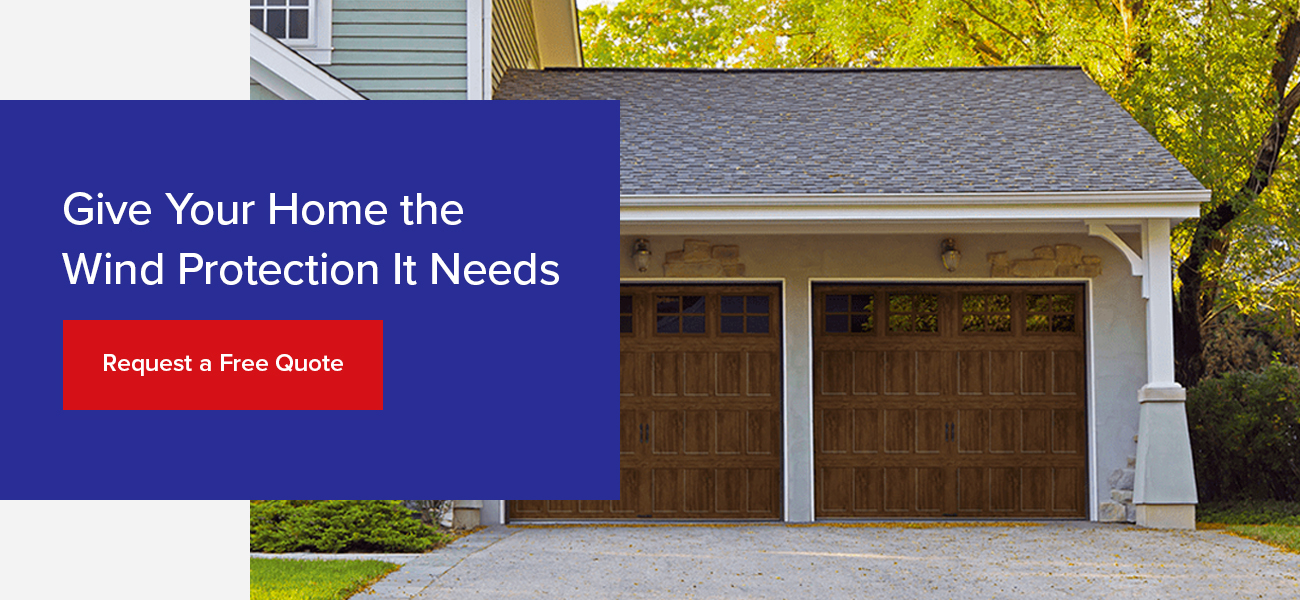Modern building codes now require wind-resistant garage doors due to extreme weather events. The degree of wind resistance depends on the area you live in. Some states in high-risk areas have special requirements. This guide explores wind-resistant garage doors and how to ensure yours offers the best protection.
Why Wind-Resistant Garage Doors Matter
According to the Federal Alliance for Safe Homes (FLASH), 90% of hurricane damage to homes starts when garage doors fail. A reinforced garage door can protect your family, home and belongings. Wind-resistant doors have a WindCode® rating. This rating reflects the door’s ability to withstand high winds from hurricanes or intense storms.
Here’s why wind-resistant garage doors are important.
1. Defending Against Extreme Weather
Garage doors protect your property from wind and storm damage caused by extreme weather events. Wind-resistant doors use reinforced steel, bracing and heavy-duty hardware to withstand high winds. Rigorous testing ensures the doors meet specific wind load standards. They offer crucial protection against hurricanes, storms and flying debris.
Homeowners in areas not prone to storms should also consider wind-resistant garage doors. Even the occasional thunderstorm can also cause minor or major wind damage.
2. Protecting Structural Integrity
Wind-resistant garage doors prevent the door from collapsing inward during high-wind events. A breached garage door allows wind to enter the house, creating internal pressure. This pressure can lead to significant structural damage or even complete roof failure. Wind-resistant doors minimize this risk by maintaining a secure barrier. Garage doors must be wind-resistant with a high WindCode rating in hurricane-prone areas.
3. Saving Money on Repairs and Insurance
Installing wind-resistant garage doors may help homeowners avoid expensive repairs by preventing major damage. A wind-resistant door is less likely to fail during a storm, saving on emergency repair costs. Due to their durability, wind-resistant doors last longer than standard doors, reducing the replacement frequency.
For extra savings, some insurance companies offer discounts for homes with wind-resistant garage doors. These doors reduce the risk of wind damage, translating into fewer claims for the insurance company. Wind-resistant doors may also be a requirement for insurance in high-risk areas.
4. Complying With Building Codes
In 1992, Category 5 Hurricane Andrew hit South Florida. This devastating hurricane inspired a change in building codes. Many states and cities have since adopted the International Building Code (IBC) to protect against hurricane-force winds.
Wind-resistant garage doors meet specific wind load building codes. These codes, often stricter in coastal or high-wind areas, mandate doors to withstand certain wind pressures. Reinforced construction, heavy-duty hardware and certified testing are key to compliance. Meeting these standards ensures structural integrity and protection during extreme weather.
Residential Garage Door Options
Impact Rated Garage Doors
Impact Rated Entry + Patio Doors

States With Special Requirements for Garage Doors
Some states prone to extreme weather have more stringent requirements than others. The risk level in your area determines the wind rating that offers the best protection. The following states have special garage door requirements:
- Florida
- California
- Missouri
- Utah
- Kansas
- Nevada
Wind-Resistant Garage Door Requirements in Florida
Florida has stricter regulations for wind-resistant doors due to its hurricane vulnerability. Where you live can impact the strength needed for your garage door. For example, garage doors must have windows with large missile impact ratings in Miami-Dade and Broward Counties.
How to Identify a Wind-Rated Garage Door
Identifying wind-rated garage doors is as simple as checking for a label. The label should show the following:
- Wind speed: Look for an mph value that shows the maximum wind speed your door can withstand. This number can range from 74 to 180 mph.
- Design pressures: Wind exerts positive and negative pressure on garage doors, measured in pounds per square foot (PSF). Positive pressure (PSF+) pushes your door inward. Negative pressure (PSF-) sucks it outward. The label reflects both values. A higher number means the door can withstand more pressure.
- WindCode rating: In Florida, your label will feature a WindCode or “W” rating. This scale ranges from W1 to W9, depending on the level of wind resistance your garage door has. The higher the number, the stronger the door’s wind-resistance level.
A door manufactured before wind-related requirements took effect in 2006 has no wind rating. In this case, upgrading to a wind-rated door may be best.
Next Steps for Homeowners
As a homeowner, you want to ensure your loved ones and home have protection when extreme weather hits. Follow these steps:
- Determine if your door meets requirements: Contact your local building department to learn the wind rating for your area. Inspect your garage door for a label or check the manufacturer’s documentation so you can compare your door’s rating to the local code requirements.
- Get a professional assessment: Hire a qualified garage door contractor to inspect your door. They can assess the door’s wind load rating, check for proper installation and guide you on the next steps.
- Upgrade to a wind-resistant door: Consider replacing your old door with a newer, wind-rated garage model. The benefits include increased damage protection, longer lifespans, reduced repair costs and extra peace of mind.
Give Your Home the Wind Protection It Needs
At The Doorman, we carry a range of Clopay® impact-rated garage doors to meet Florida building codes. We’re ready to provide new wind-resistant garage doors or repairs for the one you have. Call us at 561-600-9606 or contact us online to find out more.



